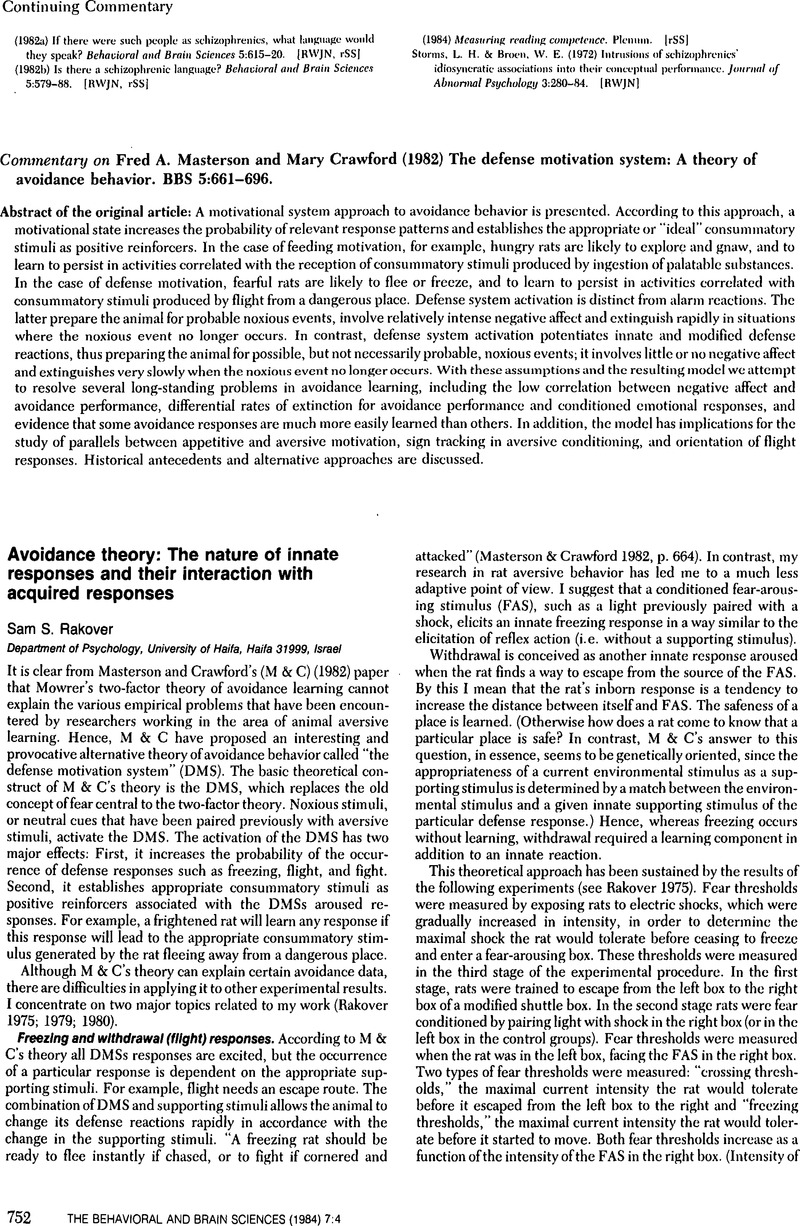Crossref Citations
This article has been cited by the following publications. This list is generated based on data provided by Crossref.
Rakover, Sam S.
1986.
Latent avoidance learning: Positive transfer from barpress to shuttle avoidance and vice versa.
Bulletin of the Psychonomic Society,
Vol. 24,
Issue. 4,
p.
286.



